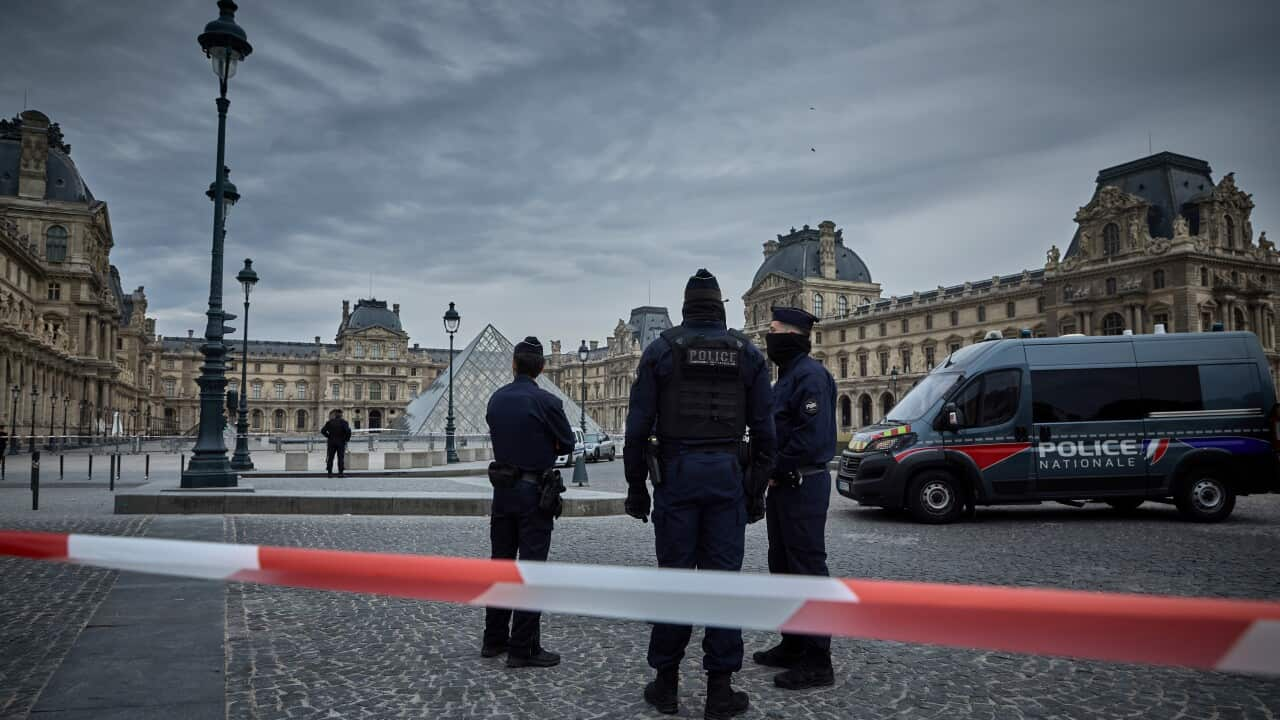The Seven-Minute Heist That Shook the Louvre
A daring early-morning robbery at the Louvre Museum in Paris stunned the art world on Sunday, after four masked men escaped with a collection of priceless jewels in what authorities have called a “highly coordinated operation.” Investigators say two of the thieves entered the museum’s famed Galerie d’Apollon, home to some of France’s most treasured artifacts, by scaling a second-floor window with the help of a basket lift mounted on a truck. The thieves, armed with compact chainsaws and cutters, smashed several glass display cases and seized multiple royal jewels before speeding away on Yamaha TMax scooters toward the A1 highway.
Among the stolen items was the crown of Empress Eugénie, wife of Napoleon III — a historic piece encrusted with gold and diamonds. French officials confirmed that the crown was later found damaged, discarded near the museum, along with another jewel believed to have been dropped during the robbers’ escape. The Louvre described the stolen pieces as “irreplaceable symbols of national heritage,” emphasizing that their loss goes far beyond monetary value.
The operation, which lasted just seven minutes, prompted a massive response from Parisian police. The French Ministry of the Interior has since classified the heist as a major cultural crime, mobilizing national investigation units specializing in organized theft and international art trafficking.
A Pattern of Museum Heists Across France
The Louvre robbery marks the latest in a series of high-profile museum thefts shaking France’s cultural institutions. In September, thieves stole nearly $700,000 in gold samples from the National Museum of Natural History, while another group targeted the Adrien Dubouché National Museum in Limoges, escaping with over $11 million in antique porcelain. Authorities believe these incidents may be connected, suggesting the involvement of an international criminal network that specifically targets museums with vulnerable security systems.
Experts in art crime warn that such robberies have grown more sophisticated, often involving teams with military-like precision and extensive planning. “These operations are executed with a level of expertise usually seen in high-value diamond thefts,” said one security analyst, noting that the attackers appeared to understand the Louvre’s security response times and surveillance blind spots. The UNESCO cultural heritage division has also expressed concern about the growing black-market demand for stolen artifacts, which often resurface years later in private collections or underground auctions.
The Cultural Shock and the Hunt for the Thieves
French Interior Minister Laurent Nuñez condemned the theft as “a direct attack on French heritage,” confirming that all specialized police units in Paris have been deployed to locate the perpetrators. He added that the robbers attempted to set the lift truck on fire before fleeing, likely to destroy forensic evidence. Investigators are analyzing security footage from nearby streets and examining surveillance data from city traffic cameras, hoping to trace the suspects’ route.
The Galerie d’Apollon, a hall renowned for housing France’s royal crowns and treasures, reopened in 2020 after a major restoration that celebrated its status as one of the most beautiful spaces in European art history. Now, it stands as the scene of what may become one of the most infamous art crimes of the 21st century.
While two pieces have been recovered, the whereabouts of the remaining jewels remain unknown. French officials are coordinating with Interpol and customs agencies across Europe to monitor cross-border movements of stolen cultural property. Meanwhile, the Louvre remains closed to the public as forensic teams continue their work within the gallery.
For France, the theft represents more than a security failure — it’s a symbolic wound to the nation’s cultural identity. The recovery of these jewels, experts say, will not only restore pieces of art history but reaffirm France’s enduring role as a guardian of world heritage.
The Louvre jewel heist of 2025 is now being compared to legendary art crimes like the 1911 theft of the Mona Lisa — a reminder that even the most guarded treasures remain vulnerable in an age of globalized crime and technology.



